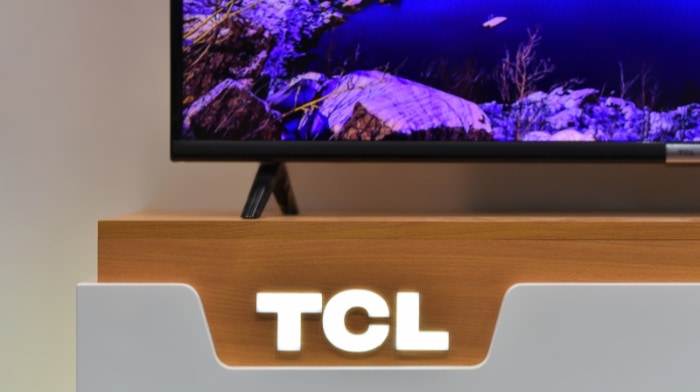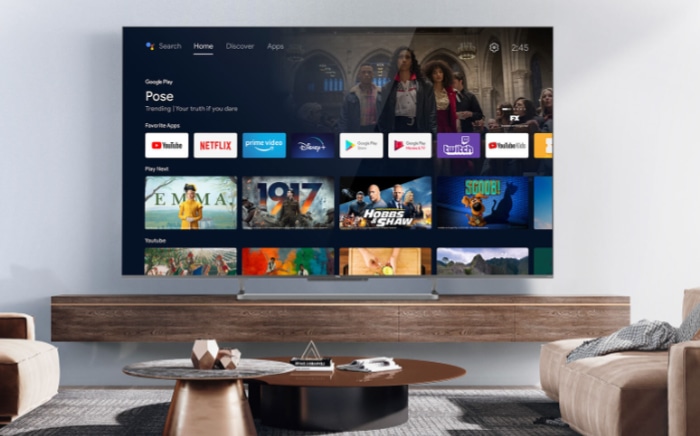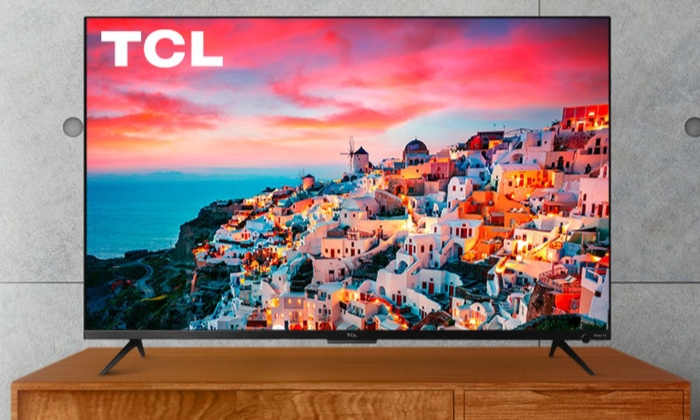Why Are TCL TVs So Cheap? Quality Meets Cost-Effectiveness

TCL has rapidly made a name for itself in the global television market. Renowned for its affordable pricing, this brand consistently manages to pique the interest of budget-conscious consumers.
Yet, a lingering question remains: Why are TCL TVs so cheap? As we delve into the depths of TCL’s business strategy, manufacturing prowess, and consumer focus, we’ll unravel the factors that make these TVs wallet-friendly without compromising on essential features.
A Glimpse into TCL’s Journey: From Its Inception to Global Acclaim
TCL, originally an acronym for Telephone Communication Limited, began its journey in 1981. Founded in Huizhou, Guangdong Province, China, it initially focused on manufacturing cassette tapes.
However, the company’s vision was broader, and it soon embarked on diversifying its product range.
Transition to Television Manufacturing
In the late 1990s, sensing a burgeoning opportunity in the television market, TCL made its strategic shift towards TV manufacturing. Their early entry into the world of digital television paved the way for their robust growth in the subsequent years.
This foresight to tap into a then-nascent market proved crucial in establishing TCL’s presence in the industry.
Global Expansion Efforts
By the early 2000s, TCL had expanded its horizons beyond China. They sought strategic partnerships, mergers, and acquisitions to cement their place in the global market.
Notably, in 2003, TCL merged its television division with Thomson SA, a French company, resulting in the creation of TCL Multimedia. This merger enabled TCL to expand its footprint in Europe and North America, ensuring its TVs were accessible to a wider audience.
Strategic Emphasis on Research and Development
Understanding the importance of innovation in a rapidly changing industry, TCL has consistently invested in research and development. This commitment to R&D has allowed the company to introduce a range of products that appeal to various segments of the market.
Whether it’s the introduction of QLED technology or the integration of smart features, TCL’s dedication to staying ahead of the curve is evident in its product lineup.
Building Brand Reputation
In addition to focusing on product innovation, TCL has been proactive in building its brand. Partnerships with major events, such as the sponsorship of the 2019 FIBA Basketball World Cup, have played a pivotal role in elevating TCL’s brand recognition worldwide.
Economies of Scale: The Secret Behind TCL’s Competitive Pricing
Economies of scale refer to the cost advantages a company can achieve when production becomes efficient as it scales up. Essentially, as the production volume increases, the cost per unit of the product decreases.
This phenomenon is central to TCL’s strategy, allowing them to offer competitively priced televisions.
How Large-Scale Production Benefits TCL
Reduced Fixed Costs: Large-scale production means that fixed costs, such as the cost of machinery, facilities, and salaried personnel, are spread over a larger number of units. For TCL, which produces millions of TVs annually, this results in a significant reduction in the cost per television set.
Bulk Purchasing Advantages: Producing on a grand scale means buying materials in bulk. When purchasing components, such as LCD panels or chips in massive quantities, TCL can negotiate better prices from suppliers, leading to substantial savings.
Streamlined Operations: With a steady and large production volume, processes can be standardized and refined over time. This streamlining results in faster production times, reduced waste, and increased efficiency, further driving down costs.
TCL’s Expansive Global Manufacturing Presence
TCL boasts numerous manufacturing facilities worldwide, especially in regions like China, which is a hub for electronics production. Their widespread production capabilities not only help in achieving economies of scale but also cater to local markets more efficiently, cutting down on transportation costs and tariffs.
Innovation and Automation
Over the years, TCL has continually invested in innovative production techniques and automation. Robotic assembly lines, for instance, minimize errors and increase production speed.
This level of automation means TCL can produce more TVs in less time, contributing to the cost benefits of economies of scale.
Challenges and Considerations
While economies of scale offer significant advantages, they also come with challenges. There’s a need for rigorous quality control to ensure that the high volume doesn’t compromise the product’s quality.
Additionally, there’s the challenge of forecasting demand accurately; overproduction can lead to excess inventory and associated holding costs.
Vertical Integration: How TCL Masters Every Step of Production
At its core, vertical integration refers to a company’s strategy of controlling multiple stages of the production process, often from the sourcing of raw materials to the sale of the final product. This approach allows businesses to have tighter control over costs, quality, and supply chain logistics.
TCL’s success in the television market can be significantly attributed to its mastery of vertical integration.
Key Components of TCL’s Vertical Integration
Raw Material Acquisition: Rather than relying on third-party suppliers, TCL often sources its essential components and raw materials directly. This direct sourcing eliminates the middleman, ensuring cost savings, and guarantees a consistent supply.
In-house Manufacturing Facilities: TCL owns and operates its manufacturing plants. By controlling the production process from start to finish, TCL ensures consistent quality across its products while also benefiting from economies of scale.
Research and Development: With its R&D departments, TCL is in a position to innovate without depending heavily on external entities. This ability to innovate in-house accelerates the time-to-market for new products and features.
Distribution and Retail: Rather than solely relying on third-party retailers or distributors, TCL has fostered relationships with key retail partners and even developed its distribution channels in some regions. This strategy offers better control over pricing, branding, and customer experience.
Benefits of Vertical Integration for TCL

Cost Efficiency: Controlling multiple stages of production often leads to reduced costs, as there are fewer intermediaries and more room for bulk operations.
Quality Control: Direct oversight of every production step ensures consistent quality standards.
Supply Chain Consistency: TCL can better manage its inventory and ensure timely production, reducing potential stockouts or overproduction.
Speedier Response to Market Trends: By integrating the process from innovation to distribution, TCL can rapidly adapt to market changes or shifts in consumer demand.
Challenges of a Vertically Integrated Model
While there are numerous advantages to vertical integration, it’s not without challenges. Companies like TCL need significant capital investments to establish facilities and operations at every production level.
There’s also a risk associated with placing “all eggs in one basket”; if one aspect of the integrated process faces issues, it can have cascading effects on other areas.
Target Demographics: Understanding TCL’s Audience-Centric Approach
At the heart of any successful business strategy is a keen understanding of the intended audience. By honing in on specific demographics, brands can tailor their products, marketing campaigns, and overall business approach to resonate more powerfully with particular consumer groups.
TCL’s strategy in the TV market offers a masterclass in how effectively targeting certain demographics can drive success.
TCL’s Core Demographics
Budget-Conscious Consumers: TCL TVs are well-renowned for being affordable without compromising essential features. This approach has made them a go-to choice for consumers seeking value for money.
Tech-Savvy Millennials and Gen Z: With the integration of smart features and compatibility with popular streaming services, TCL appeals to younger audiences who prioritize connectivity and modern functionalities.
First-Time TV Buyers: Those venturing into purchasing their first TV often seek a blend of affordability, decent size, and quality. TCL’s range offers multiple options that are perfect for this demographic.
Emerging Markets: In regions where the middle-class population is expanding, and there’s a growing demand for quality electronics at accessible prices, TCL has made significant inroads.
Strategic Product Development for Target Groups
TCL’s understanding of its primary demographics is evident in its product development:
Variety of Sizes and Features: TCL offers a wide range of TV sizes, ensuring there’s a fit for everyone, from students in dorm rooms to families upgrading their living room centerpiece.
Smart Integration: Collaborating with platforms like Roku and ensuring built-in streaming capabilities caters to the tech-savvy audience seeking a seamless entertainment experience.
Regular Updates and Improvements: By frequently updating their product line and incorporating feedback, TCL ensures that their TVs remain relevant and appealing to their target audiences.
Marketing Efforts Tailored to Demographics
TCL’s marketing campaigns and promotions often align with the preferences and habits of their target groups. Whether it’s sponsoring esports events, partnering with popular streaming platforms for bundled offers, or advertising in regions with growing economies, TCL ensures their brand remains top-of-mind for their core demographics.
Challenges and Adaptations
While having a focused demographic approach offers many advantages, it also requires TCL to remain adaptive. Changing consumer preferences, technological advancements, and shifts in global economic landscapes mean that the brand must continually reassess and refine its target demographic strategies.
Smart Decisions in Technology Integration: How TCL Stays Ahead in the Digital Age
In today’s digital era, merely producing a good-quality television isn’t enough. Consumers are seeking integrated, multifunctional devices that can serve as entertainment hubs.
Recognizing this trend, TCL has made several smart decisions in integrating cutting-edge technologies into their TVs, ensuring they remain at the forefront of consumer electronics.
Partnership with Roku
One of the most defining moves by TCL was partnering with Roku, a leading streaming platform:
Seamless User Experience: By integrating Roku’s interface into their TVs, TCL offers consumers access to thousands of streaming channels without the need for additional devices or subscriptions.
Cost Efficiency: Instead of investing heavily in developing a proprietary smart TV platform, TCL leveraged Roku’s established and user-friendly system, allowing them to offer smart TVs at competitive prices.
Embracing QLED Technology

TCL was among the first to bring QLED technology, which provides brighter and more vibrant colors, to the mid-range market segment:
Premium Picture Quality: Incorporating QLED has enabled TCL TVs to deliver near-premium picture quality at a fraction of the price of high-end models from other brands.
Setting Market Trends: By adopting QLED technology early, TCL positioned itself as a trendsetter rather than a follower in the television industry.
Voice Control and Smart Home Integration
In response to the growing demand for interconnected smart homes:
Voice Activation: Many TCL TV models now come equipped with voice control features, allowing users to change channels, adjust volume, or search for content using voice commands.
Integration with Smart Home Devices: TCL TVs can often be integrated with popular smart home systems and devices, providing users with a cohesive and interconnected home environment.
Emphasis on Gaming
Recognizing the booming gaming industry and its overlap with their target demographics:
Enhanced Refresh Rates: TCL has developed TVs with higher refresh rates, ensuring smoother gameplay experiences for avid gamers.
Gaming Modes: Certain models come equipped with dedicated gaming modes that optimize screen settings for a more immersive gaming experience.
Adaptable Connectivity Options
In a world of multiple devices:
Diverse Port Offerings: TCL TVs often feature a variety of connectivity options, from multiple HDMI ports to USB connections, ensuring users can connect a wide range of devices with ease.
Staying Updated and Responsive
To ensure their technology integrations remain relevant:
Regular Software Updates: TCL frequently releases software updates for their smart TVs, introducing new features, improving security, and enhancing user experience.
Feedback Loops: The brand actively seeks feedback from users, using this valuable information to inform future integrations and improvements.
Quality vs. Cost Trade-offs: Navigating the Delicate Balance in TCL TVs
Every manufacturer, whether in electronics or other industries, faces the challenge of balancing quality with cost. Consumers have diverse needs; while some prioritize premium features and are willing to pay a higher price, others are looking for affordable options that provide the best value for their money.
TCL, as a prominent player in the television market, continually navigates this intricate balance.
Understanding Consumer Expectations
TCL’s rise to prominence in the global TV market can be attributed to its deep understanding of various consumer segments:
Budget-Conscious Segment: For consumers who prioritize price, TCL offers models that, while affordable, still incorporate essential features and respectable performance levels.
Mid-Range Segment: Here, TCL competes by offering features commonly found in premium models—like smart integrations and QLED technology—but at a significantly reduced cost.
Trade-offs in the Manufacturing Process
Component Sourcing: While premium TV brands might opt for the highest-end components available, TCL might select more cost-effective components that still meet acceptable quality standards.
Production Techniques: Advanced manufacturing techniques that produce the highest quality often come at a higher cost. TCL might employ a mix of advanced and standard techniques to balance cost and quality.
Features and Functionality: Rather than packing every potential feature into a TV model, TCL might choose to integrate the most demanded features to maintain a competitive price point.
Quality Assurance: A Non-Negotiable Factor
Despite the cost considerations, TCL ensures that quality isn’t overlooked:
Testing and Quality Control: Every TV undergoes rigorous testing to ensure it meets certain quality standards. This process helps in minimizing defects and ensuring customer satisfaction.
Feedback Mechanisms: TCL actively seeks and responds to customer feedback. By understanding consumer grievances and praises, the company can refine its future products.
The Resultant Product Range
TCL’s product lineup is a testament to its approach to the quality-cost conundrum:
Entry-Level TVs: Offer basic functionality and features suitable for general viewing needs without the bells and whistles of premium models.
Mid-Tier TVs: These strike a balance, offering more advanced features like higher resolutions, smart capabilities, and better refresh rates while still being affordable.
High-End Offerings: While TCL is often associated with affordability, they do offer models that rival the premium offerings from other brands in terms of features and quality.
A Strategic Decision for Market Positioning
It’s essential to recognize that TCL’s approach to balancing quality and cost isn’t merely about manufacturing decisions. It’s a strategic move designed to position the brand uniquely in a crowded marketplace, appealing to a broad swath of consumers looking for value at various price points.
Navigating the Future
As technology advances and consumer expectations evolve, the challenge of balancing quality and cost will continue. Brands like TCL will need to remain adaptable, continuously assessing the market and refining their approach to maintain their competitive edge.
By understanding and responding to these trade-offs, TCL ensures its continued relevance and success in the global television market.
Table of Contents
- A Glimpse into TCL’s Journey: From Its Inception to Global Acclaim
- Economies of Scale: The Secret Behind TCL’s Competitive Pricing
- Vertical Integration: How TCL Masters Every Step of Production
- Target Demographics: Understanding TCL’s Audience-Centric Approach
- Smart Decisions in Technology Integration: How TCL Stays Ahead in the Digital Age
- Quality vs. Cost Trade-offs: Navigating the Delicate Balance in TCL TVs


